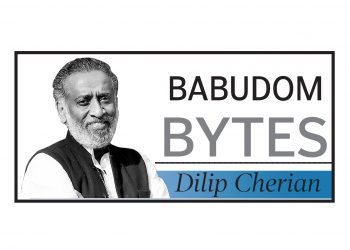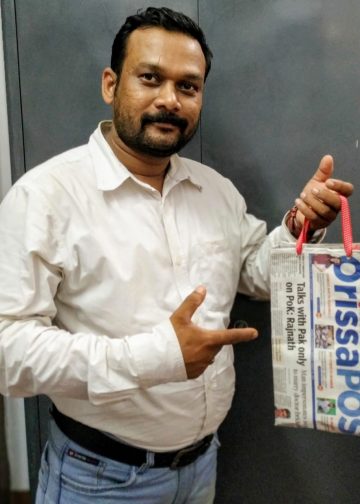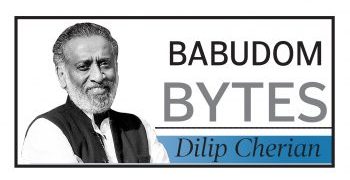Prakash Mishra is back in the spotlight. The BJP-led Odisha government has appointed the retired IPS officer as an advisor to Chief Minister Mohan Charan Majhi—with cabinet rank, no less. That’s a big deal, not just for Mishra but also for Odisha’s political landscape.
Mishra’s career has been anything but ordinary. When the Modi government came to power in 2014, it wasted no time picking him as the Director General of the CRPF, India’s largest paramilitary force. After retirement, he continued to be in the Centre’s good books, serving as DG of Home Guards, Civil Defence & Fire Services. Eventually, he joined the BJP, making his political leanings clear.
But Mishra’s story isn’t just about his rise, it’s also about the hurdles he faced. His tenure as Odisha’s DGP ended abruptly when then-Chief Minister Naveen Patnaik sidelined him. However, he found his way back into the system through key roles in Delhi. He even came close to bagging one of the country’s most coveted jobs—CBI Director. Insiders believe he was the Modi government’s top pick to replace Ranjit Sinha, but just as his name was gaining traction, an old foe resurfaced: Odisha’s vigilance department.
In 2014, when Mishra’s name was in contention for the CBI top post, the Odisha government slapped a vigilance case on him, alleging financial irregularities from his tenure as CMD of the State Police Housing and Welfare Corporation. Coincidence? Hardly. Many saw it as a strategic move by the Patnaik government to block his appointment. The Orissa High Court later threw out the case in 2015, calling out the state government for targeting him.
Now, a decade later, Mishra’s political innings seem to be taking off in earnest. His appointment as CM’s advisor is not just about administrative experience, it’s a statement. The BJP is betting big on seasoned bureaucrats, and Mishra’s re-entry into Odisha’s power circles signals a shift in the state’s political dynamics. This time, he’s not just the cop who took on the system—he’s part of it.
Who’s really in charge? When babus hold the reins
Union Finance Minister Nirmala Sitharaman’s recent admission raises an age-old question: Who really calls the shots in India’s governance—the elected government or the bureaucratic machinery? When she revealed that Prime Minister Narendra Modi was keen on tax relief but bureaucratic processes slowed things down, it sounded less like a simple statement and more like an unintentional reality check.
Her exact words? “The PM was very clear that he wants to do something… So, the more work that was needed, was needed for convincing the board…” Translation: The political leadership may have grand ideas, but the babus decide when—or if—those ideas see the light of day.
Now, is this a helpless acknowledgement that babus continue to wield power across political dispensations? Or was this a veiled compliment to the bureaucracy for its due diligence—ensuring that nothing moves without being thoroughly scrutinized? Either way, the message is clear: No matter who’s in power, the system works at its own pace.
For taxpayers hoping for quicker relief, this is a classic case of “the spirit is willing, but the file is stuck in processing.” This also highlights an uncomfortable reality—politicians can set the vision, but it’s the bureaucrats who decide how fast (or slow) things move.
So, the next time a policy change feels like it’s taking forever, don’t just look at the political leadership—follow the paper trail. You’ll likely fi nd it gathering dust on some babu’s desk.
Himachal’s bold move
Himachal Pradesh Chief Minister Sukhvinder Singh Sukhu has stirred the pot with his decision to halt the induction of new IAS and IPS officers into the state cadre. His logic? With a population of 70 lakh, the existing 153 IAS officers should be more than enough. He’s also eyeing a reduction in Indian Forest Service (IFS) offi cers. Sounds like a masterstroke. Well, not everyone is convinced.
Opposition leader Jai Ram Thakur has already taken a swing, calling it a governance failure in the making. The argument against Sukhu’s move is straightforward, fewer officers means an increased workload, slower decision-making, and potential administrative chaos. The bureaucracy, after all, is the backbone of governance, and trimming it down could create more bottlenecks than efficiencies.
But Sukhu isn’t just playing the numbers game. His move is part of a larger effort to cut costs and streamline administration. Reducing unnecessary government spending is a politically smart (and economically prudent) decision in an era where state finances are stretched thin. Instead of endlessly expanding the bureaucratic machinery, the government is signaling a shift towards efficiency over size.
The real question is: Will this actually lead to better governance, or will it backfire by overloading the existing cadre? India’s babus aren’t exactly known for their lightning-fast efficiency—so placing more responsibilities on fewer officers could just create another layer of delays. On the flip side, if done right, a leaner, more accountable bureaucracy could be a game-changer.
For now, Sukhu’s move has set the stage for a high-stakes experiment. Will it deliver smarter governance or leave the state gasping for administrative support? Himachal Pradesh is about to find out.
By Dilip Cherian






































